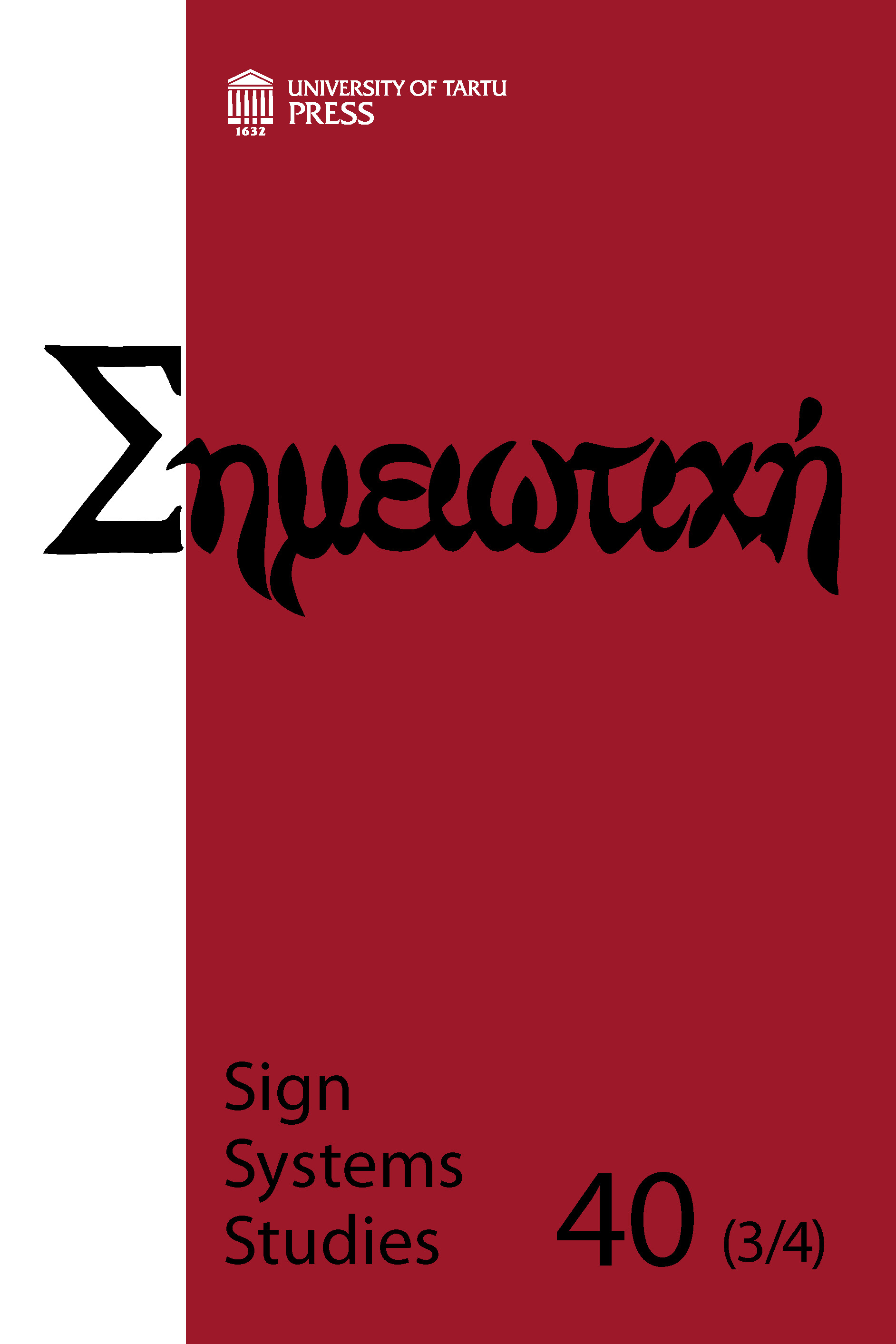Semiotics of mediation. Theses
DOI:
https://doi.org/10.12697/SSS.2012.3-4.15Abstract
Semiotics of mediation is based on comparative analysis of mediation processes, on typology of forms of mediation and on the subsequent complementary analysis of culture. Not only does cultural analysis that is based on semiotics of mediation proceed from communication processes, it also searches for possibilities of correlation between concepts of describability, analysability, translatability. Depending on the strategy of mediation semiotics it is possible to create an overview of the main parameters of cultural analysis and to specify the boundaries of semiotic analysis of culture. The main types of mediation are simultaneously parameters of cultural analysis. The main types include autocommunicative mediation, metalingual mediation, intertextual mediation, interdiscursive mediation, and inter- or transmedial mediation. Typology of mediation types facilitates the understanding of the autocommunicative aspect of culture and creates the basis for analysing communication processes not on the level of the immediate sender and receiver but as part of the culture’s communication with itself. Semiotics of mediation starts from semiotic mediation and ends with a culture of mediation in which one and the same cultural language or text operates as a means of dialogue with itself, as a means of communication with others, as part of some textual system or discourse, or as a transmedial phenomenon. Semiotics of mediation is a means of studying the correlation between implicit semiotic mediation and forms of explicit semiotic mediation, thus complementing cultural semiotic study of culture.Downloads
Download data is not yet available.
Downloads
Published
2012-12-01
How to Cite
Torop, P. (2012). Semiotics of mediation. Theses. Sign Systems Studies, 40(3/4), 547–556. https://doi.org/10.12697/SSS.2012.3-4.15
Issue
Section
Articles


